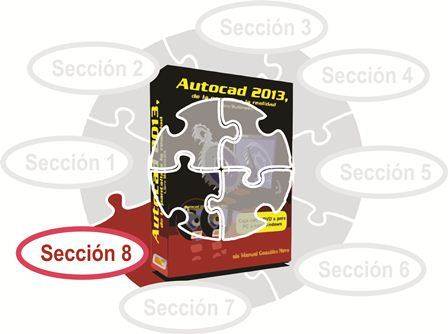3D Drawing with AutoCAD - Section 8

40.3 Fund
Before rendering a scene properly, we can add a background to our model, which will be displayed in the graphics window. This background can be a bitmap, a color gradient or, simply, leave the Autocad preset in black and white. To do this we use the View Manager that we studied in chapter 14. When you define a new view, the administrator opens a dialog where you select a background for the entire scene.
40.4 Modelized
Modeling is a process by which a bitmap image is generated from a scene in an 3D model. To create such an image, the objects are shaded according to the lighting set and the materials that have been defined. The properties of refraction and translucency, among many others, of the chosen materials are shown in the output as they would behave in reality. In addition, it is possible to add atmospheric effects, such as the presence of fog.
Obviously, you need to be a real expert to set all the parameters of lights and materials and the first obtain an optimal result because you know beforehand. In addition, in the modeling process, it is necessary to establish in turn several additional parameters. In fact, it will most likely set these parameters, which we will see briefly shortly, and then generate a provisional low- or medium-quality photorealistic output, re-modify parameters and generate another output again, and so on until satisfied with the result. Then it will generate one or more outputs with the highest quality. This is because some rendering parameters can exponentially increase the output generation time, and may take, in complex models a good amount of time even in respectable power equipment. Even more so if you work with average power PCs, very common in the market.
The Render section has several buttons with the values to modify. Using the Exposure Adjustment button in the Render section, you can change the Brightness, Contrast, Medium Tone, Daylight and Background rendering values of the image. The Environment button allows you to add fog to the scene, which distinguishes between near and far and its quantities. Because it is possible to define a color to the mist, it is a recurring resource for those who create abstract 3D models or imaginary worlds.
The Advanced Modeling Parameters dialog box gives you access to all modeling parameters, which form a fairly large list that ranges from output size and resolution to the shadow sampling level.
This window includes predefined values depending on the output quality (Draft, Low, Medium, High and Layout), but it is obvious that you can modify them to give a different result. To use a set of custom values from this window in other models, we can record it with a specific name, the same way the views, SCP, text styles, etc. are recorded. To do this we press the command valuepredefmodel in the command window and a dialog box appears where we can give a name to our set of values or load another one existing for its use.
As we said above, there are some values of this window that drastically increase the quality and realism of the resulting image, but also increase the processing time. In particular the sampling values (with a default maximum value of 16), the generation of shadows via ray tracing, the ray tracing depth (i.e. the number of times light is reflected and/or refracted on materials) and the activation of "Final Gathering" (which also increases the number of rays to correctly represent global illumination), must be used sparingly so as not to leave the machine in a long process of generating the output. In that sense, our advice is to modify only one of these values (and not in an excessive way), generate a high quality output (prior to the maximum quality called Presentation) and see the result. Return the parameter to its original value, modify the next one, and generate an output again, and so on until you become familiar with its various effects. Once the result of one and another parameter has been contrasted, choose the best combination and order a final output while preparing a delicious cup of coffee, you will need to wait.
Although here is a small detail: we have not yet said how to order the exit (return the coffee to the coffee maker if it has not yet tried, so it does not cool).
The final step is to specify the quality of the rendering and its size in pixels and then simply generate the output by pressing the “Render” button, which will open the rendering window, where you can see the progress of your work. You can save the image from the same window that shows the render, unless you have previously defined a file name in the Render section of the ribbon.

